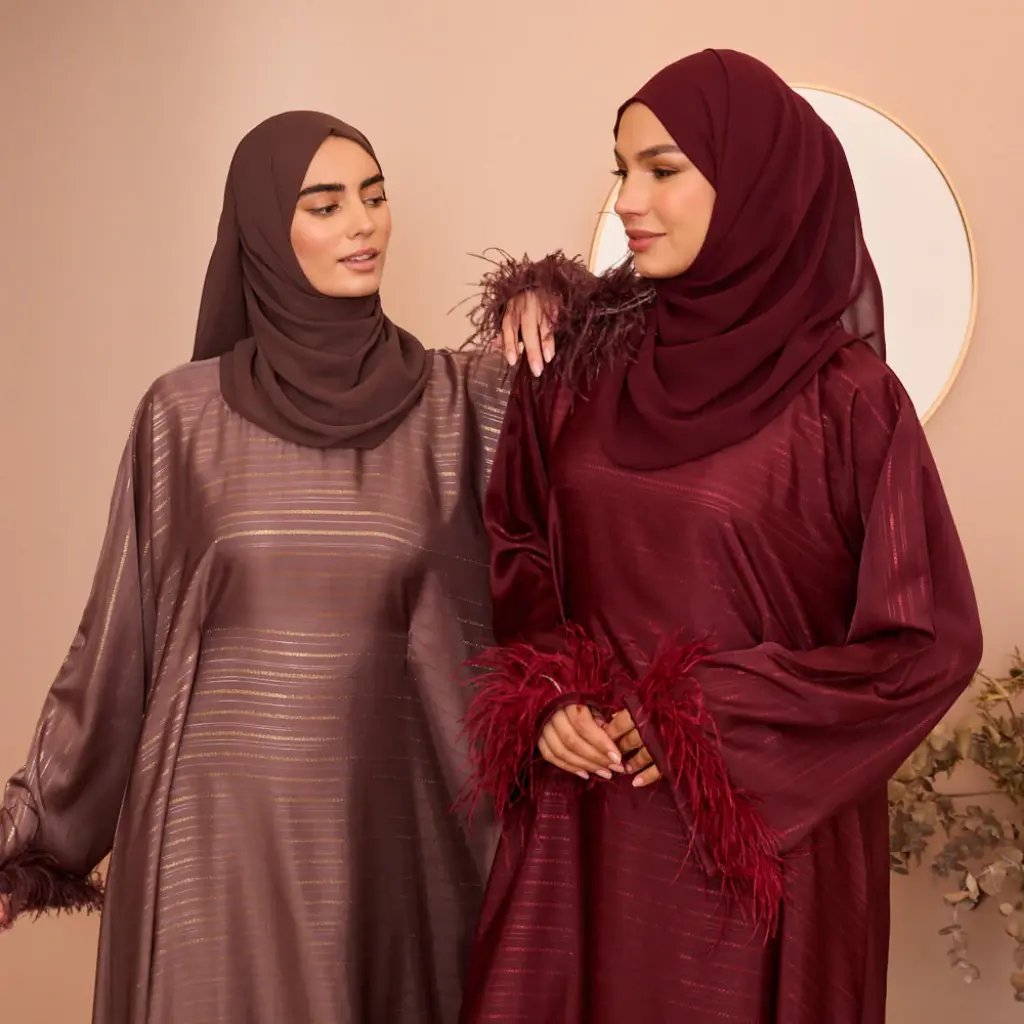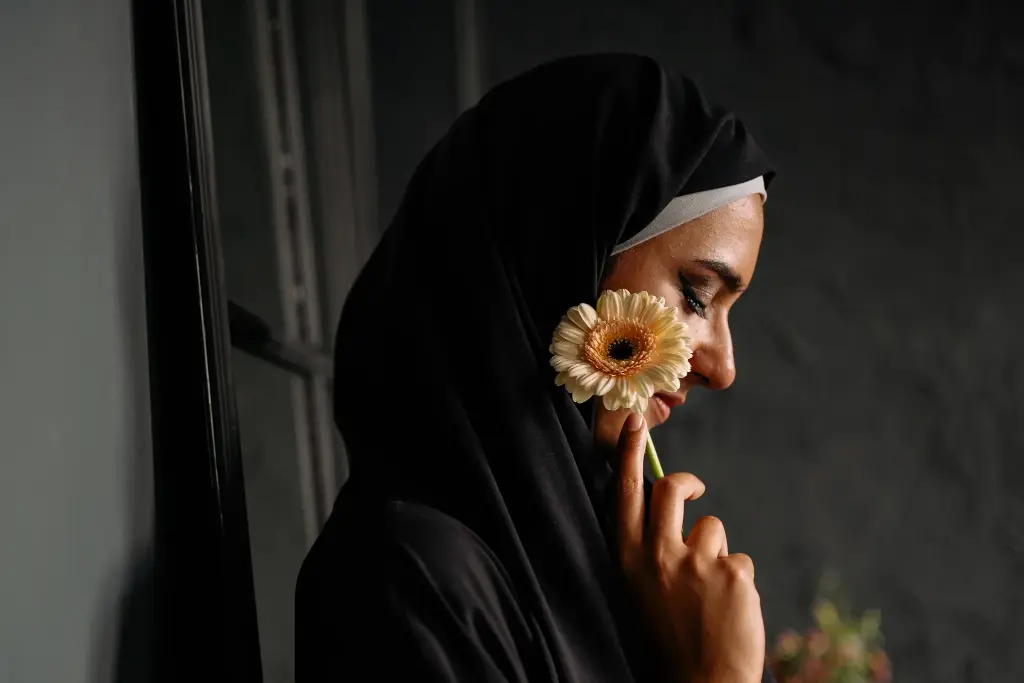The abaya, a long, flowing robe, is more than just a garment; it’s a powerful symbol of identity, faith, and cultural heritage for many women around the world. Often associated with the Middle East, its significance and evolution reveal a fascinating journey through tradition and modernity. This article explores the history, meaning, and diverse expressions of the abaya, offering a comprehensive look at this iconic piece of clothing.
Understanding the Abaya’s Origins and Historical Context
The exact origins of the abaya are debated, but its roots trace back to ancient forms of draped clothing worn for practicality and modesty. Historically, it served as an outer garment to protect wearers from the harsh desert climates.
Over time, its design and significance evolved, becoming a prominent feature of Islamic culture. It’s essential to note that the abaya’s prevalence varies regionally, with its popularity often linked to specific cultural interpretations and religious practices.

From Functional Garment to Cultural Symbol
Initially, the abaya was primarily functional, designed for coverage and protection. It provided comfort in the desert sun and offered a practical solution for women needing to move freely while maintaining modesty. However, as societies developed, the abaya transitioned from simply a practical item to a powerful cultural emblem, becoming deeply ingrained in the social fabric of many communities. This evolution highlights how clothing can adopt new meanings and interpretations over time.
See also Dishdashas: Exploring Comfort, Style, and Cultural Identity in Men’s Fashion
Dishdashas: Exploring Comfort, Style, and Cultural Identity in Men’s FashionRegional Variations in the Abaya’s Usage
The significance and frequency of abaya usage vary greatly across different regions and countries. For example, in some countries, it is mandatory in public settings, while in others, it’s a matter of personal choice. These variations highlight the diversity within the Islamic world and underscore how cultural and local contexts shape the way clothing is perceived and worn. It’s crucial to understand that not all Muslim women wear abayas, and the choice is often deeply personal.
The Abaya’s Design: A Blend of Tradition and Modernity
While the traditional abaya is a simple, black, loose-fitting robe, the modern version encompasses a wide variety of styles, colors, and embellishments. The evolution in its design showcases how traditional garments can adapt to contemporary trends while retaining their cultural core. This section delves into the diverse aspects of abaya design.

Classic Abaya Styles: Simplicity and Elegance
The classic abaya is usually characterized by its simple, flowing cut and often features minimal detailing. Its primary purpose is to provide complete coverage, and black is the traditional color. These traditional styles continue to be favored by those who prefer a more straightforward and conservative approach to dressing. These designs represent the core essence of the abaya: modesty and coverage.
Modern Adaptations: Colors, Cuts, and Embellishments
Modern abaya designs showcase significant creativity and innovation. Designers have incorporated various colors, fabrics, and embellishments, including embroidery, lace, beads, and sequins. These modern adaptations allow for more personal expression while still maintaining the modest nature of the garment. From flowing, flared designs to tailored, structured styles, the diversity in contemporary abayas reflects a desire to merge tradition with modern fashion trends.
See also Gamsbart: A Traditional Alpine Ornament with a Rich History
Gamsbart: A Traditional Alpine Ornament with a Rich HistoryThe Role of Fabrics and Craftsmanship
The choice of fabrics plays a vital role in the design and comfort of the abaya. Lightweight materials like crepe, chiffon, and silk are popular for warmer climates, offering breathability and elegance. Heavier fabrics like wool and cashmere are preferred in colder regions for warmth and drape. The craftsmanship involved in creating an abaya, whether handmade or machine-produced, greatly impacts the final look and feel. Intricate embroideries and hand-sewn details showcase the artistry and skill of the designers and artisans.
The Abaya as a Statement of Personal Style and Cultural Identity
For many women, the abaya is not merely a piece of clothing; it’s a statement of personal style, cultural identity, and religious devotion. This section explores the multifaceted meanings behind wearing the abaya and how women use it to express themselves.
Expressing Modesty and Religious Devotion
The abaya is often viewed as a visible expression of modesty and adherence to Islamic teachings. For many Muslim women, wearing the abaya is a personal choice rooted in their faith, and it represents a commitment to religious values and principles. It’s a way to maintain a sense of modesty and privacy while navigating public spaces.
A Medium for Self-Expression
While modesty is an important aspect, the modern abaya also serves as a canvas for personal expression. The variety in designs, colors, and styles allows women to choose abayas that reflect their individual tastes and preferences. Through their choice of abaya, women communicate their personality and sense of style, showcasing that modest clothing can be both beautiful and fashionable. The abaya, therefore, becomes a form of self-representation.
The Abaya in the Fashion World
The abaya has increasingly gained recognition in the global fashion industry. International designers are now incorporating elements of abaya design into their collections, showcasing the garment’s elegance and versatility. This increased visibility has not only challenged traditional views of modest fashion but also celebrated the beauty and diversity inherent in cultural garments. The abaya’s presence on the global stage highlights its relevance in contemporary fashion.
Navigating Misconceptions and Stereotypes
The abaya is often the subject of misconceptions and stereotypes, primarily due to a lack of understanding of its cultural significance. It’s crucial to address these misconceptions to promote a more accurate and nuanced view of this iconic garment. This section aims to dispel common myths and provide a clearer understanding of the abaya’s meaning.
Challenging the Notion of Oppression
A common misconception is that the abaya represents oppression or a lack of freedom for women. In reality, for many women, it is a conscious and personal choice that reflects their religious beliefs and cultural identity. Equating it solely with oppression overlooks the diverse reasons why women choose to wear it. The abaya, in many ways, empowers women by allowing them to define their sense of self and modesty on their own terms.
Understanding Personal Choice
It’s important to emphasize that the decision to wear an abaya is often a deeply personal one, driven by various factors such as faith, family traditions, and personal preferences. Not all Muslim women wear abayas, and those who do have diverse motivations. This highlights the significance of acknowledging and respecting individual choices and cultural expressions, free from preconceived notions. Attributing a singular meaning to the abaya fails to recognize the rich complexity of its wearing practices.
The Abaya as a Symbol of Empowerment
For many wearers, the abaya is not a symbol of restriction but of empowerment. It allows them to navigate public spaces while maintaining their sense of privacy and identity. The abaya also serves as a tool for cultural preservation, allowing women to stay connected to their heritage while participating in modern society. It is an expression of agency and self-determination that challenges the narrative of passivity.

The Future of the Abaya: Innovation and Tradition
The abaya continues to evolve as designers incorporate new ideas while respecting its cultural heritage. The future of the abaya looks promising, as it continues to integrate into both local and international fashion scenes. This section examines the ongoing innovations and the role the abaya plays in contemporary society.
Sustainable Practices in Abaya Production
The fashion industry is increasingly focusing on sustainability, and the production of abayas is no exception. Designers and manufacturers are exploring eco-friendly materials and ethical practices to minimize their environmental impact. This shift towards sustainability ensures that the abaya can remain a relevant and responsible garment for generations to come. The use of natural fibers and responsible production methods is becoming more common.
The Abaya in the Digital Age
The digital age has also impacted how the abaya is designed, marketed, and consumed. Online platforms and social media have played a vital role in showcasing diverse abaya styles, reaching wider audiences, and promoting small businesses. Digital technologies have also enabled designers to create innovative designs and communicate with customers more directly. The online presence of abayas further underscores their dynamic nature.
Continuing Cultural Significance and Modern Relevance
The future of the abaya rests on its ability to balance cultural significance with modern relevance. As long as designers and wearers continue to adapt and innovate while respecting its roots, the abaya will remain an important symbol of cultural heritage and personal expression. Its journey through history and into the future is a testament to its enduring power and versatility. The abaya’s future will undoubtedly be shaped by its ability to continuously evolve while staying true to its core identity.
Conclusion: Celebrating the Abaya’s Rich Heritage
The abaya, through its evolution, stands as a testament to the dynamic interplay between tradition and modernity. From a simple, functional garment to a powerful symbol of cultural identity and personal expression, it continues to hold immense significance for women around the world.
Understanding its history, diverse designs, and the various interpretations surrounding its use is crucial for fostering respect and appreciation for cultural diversity. The abaya’s journey continues, and its story is one that is filled with rich narratives of style, elegance, and cultural pride.
The abaya’s story is not just about a piece of clothing, but about the women who wear it, their personal stories, and the vibrant cultures that shape their lives. This ongoing evolution confirms that the abaya is more than just fashion; it is a living, breathing cultural symbol, and a testament to the power of clothing to shape identity and meaning.




